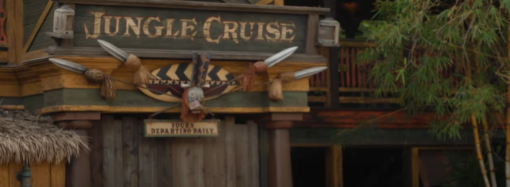This past Thursday, The Walt Disney Company filed their 10-K form with the Securities and Exchange Commission. The form is an annual report, required by the U.S. Securities and Exchange Commission, that gives a comprehensive summary of a company’s financial performance.
The biggest news to come from the filings concerns Cast Member layoffs. Back in September, the company announced there would be 28,000 permanent layoffs in the Parks, Experiences, and Products division. These layoffs would affect everyone from hourly employees to managers. However, after the filing, that number has been adjusted upwards and will now result in the layoff of an additional 4,000 employees.
“Due to the current climate, including COVID-19 impacts, and changing environment in which we are operating, the Company has generated efficiencies in its staffing, including limiting hiring to critical business roles, furloughs and reductions-in-force,” read the SEC filing. “As part of these actions, the employment of approximately 32,000 employees primarily at Parks, Experiences and Products will terminate in the first half of fiscal 2021. Additionally, as of October 3, 2020, approximately 37,000 employees who are not scheduled for employment termination were on furlough as a result of COVID-19’s impact on our businesses.”
As of 3 October 2020, the company employed approximately 203,000 employees. Disney reported that “our global workforce is comprised of approximately 80% full time and 20% part time employees, with nearly 1% of the part time population being seasonal employees.” Out of the total number, approximately 155,000 employees work in the Parks, Experiences, and Products division.
Addressing how the novel coronavirus (COVID-19) pandemic has impacted the company they stated that “measures to prevent its spread impacted our segments in a number of ways, most significantly at Parks, Experiences and Products …”
“… our theme parks were closed or operating at significantly reduced capacity for a significant portion of the year, cruise ship sailings and guided tours were suspended since late in the second quarter and retail stores were closed for a significant portion of the year.
We also had an adverse impact on our merchandise licensing business. Our Studio Entertainment segment has delayed, or in some cases, shortened or cancelled, theatrical releases, and stage play performances have been suspended since late in the second quarter.
We also had adverse impacts on advertising sales at Media Networks and Direct-to-Consumer & International. Since March 2020, we have experienced significant disruptions in the production and availability of content, including the shift of key live sports programming from our third quarter to the fourth quarter and into fiscal 2021 as well as the suspension of production of most film and television content since late in the second quarter, although some film and television production resumed in the fourth quarter.”
They went on to say they will not know the “impact of these disruptions and the extent of their adverse impact” on their “financial and operating results” for the foreseeable future. Disruptions to their businesses “will be dictated by the length of time that such disruptions continue” and the “unknowable duration and severity of the impacts of COVID-19”
Other factors affecting Disney’s various divisions including future government actions in response to the virus and individuals’ and companies’ risk tolerance regarding health matters going forward. They also stated that even though some of their businesses have reopened, they have and will incur additional costs due to government regulations and protocols put in place to insure the safety of their employees, talent and guests.
“The reopening or closure of our businesses is dependent on applicable government requirements, which vary by location, are subject to ongoing changes, which could result from increasing COVID-19 cases.”
In the filing the company detailed the status of each of their theme parks around the globe. Currently all of the Disney Resorts have reopened with the exception of Disneyland Paris and the Disneyland Resort in Anaheim, California.
Due to a spike in COVID-19 cases in France, President Emmanuel Macron had recently issued another lockdown for the county. As numbers started to drop, Macron allowed some easing of the restrictions. However, he ruled out the reopening of any theme parks, including Disneyland Paris, until next year. The park was expecting to reopen from December 19 until January 3, when they would shut back down for refurbishments. However, they have now stated they will remain closed until 13 February 2021, at the earliest.
The Disneyland Resort in Anaheim has had the worst time of all the theme parks. Among spiking cases and new restrictions from the State of California, Disneyland has yet to reopen from initially closing this past March. An interesting note from the filing states, “The Company owns 486 acres and has rights under a long-term lease for use of an additional 55 acres of land in Anaheim, California.”
Even though most of their theme parks have reopened, many are still in a phased reopening and all parks are operating at a reduced capacity. This coupled with the public’s fear of traveling has affected overall revenues.
Also affected are businesses that pay rent to Disney. According to Variety, “The impact of the crisis on consumers and business owners is also being felt, as some fall behind rent and begin to tighten their wallets.”
“We have granted rent waivers to some of our tenants, and they have not paid rent while certain of our facilities have been closed,” reads the filing. “We have experienced increased returns and refunds and customer requests for payment deferrals. Collectively, our impacted businesses have historically been the source of the majority of our revenue.”
Trying to minimize the impact on their balance sheet, Variety stated that Disney “noted in its 10-K that among the financial impacts, its debt ratings have been cut — and may be further downgraded in the future — as a result. It may also have to engage in all manner of methods to reduce its expenses, such as cutting back on film and TV content investments. In April, the company entered into an additional $5 billion credit agreement and noted during its Q4 earnings release that it would forego its semi-annual dividend for the back half of the year.”
“We may take additional mitigation actions in the future such as raising additional financing; not declaring future dividends; reducing, or not making, certain payments, such as some contributions to our pension and postretirement medical plans; further suspending capital spending, reducing film and television content investments; or implementing additional furloughs or reductions in force,” said Disney.
Given recent developments of multiple vaccines for the novel coronavirus and the success of other Disney divisions, Wall Street remains positive on the company.
“Even with the disruption caused by COVID-19, we’ve been able to effectively manage our businesses while also taking bold, deliberate steps to position our company for greater long-term growth,” stated Disney CEO Bob Chapek.







